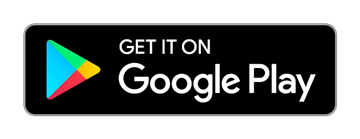Your Immune System
Pain is the sensation of hurting resulting from an unpleasant or strong discomfort from injury, sickness, disease or functional disorder and is transmitted through the nervous system. More than a physical sensation, pain is our body’s way of defending us from physical harm and further pain by triggering processes that prompt us to seek strategies to protect ourselves and end the experience. Typically, pain is classified as acute or chronic. Acute pain usually is immediate, such as the kind that results from injury, sickness and disease, and then begins subsiding. Chronic pain, described as the disease of pain, serves no apparent biological purpose and can persist for long periods, in some cases years and others indefinitely; frequently it’s resistant to treatment and its cause often is an enigma.
“One in four U.S. adults said they suffered a daylong bout of pain in the month prior to being surveyed, according to a 2006 annual report. One in 10 said the pain lasted a year or more.”
—National Center for Health Statistics
“Pain is a more terrible lord of mankind than even death itself.
—Dr. Albert Schweitzer
Knee Surgery Patient Feels No Pain
The following is a brief summary of an article from Dr. Raymond T. Bradley, who was familiar with HeartMath techniques such as the Heart Lock-In prior to undergoing knee surgery in 2004, and later wrote for the HeartMath Institute.
Dr. Bradley was to have bilateral knee arthroscopic surgery on both legs as an outpatient. To prepare for the surgery, he had visualization sessions with his therapist in conjunction with and complemented by daily Heart Lock-In® sessions in the morning and evening. “My goal was to create a safe and secure place in my mind and heart in which to enter for the surgery – filled only with love (no fear) – and to be able to totally surrender myself to the surgery, whatever the outcome. … My last memory was of total peace and calm and a heart filled with unbounded love and appreciation,” he said, referring to when he was wheeled into the operating room, at which time he did a final Heart Lock-In session. “The surgery went well and I awoke with no side effects: clearheaded, hungry and thirsty, and totally energized and exuberant in spirit. My body felt full only of love and appreciation – I had no pain at all!”
Relieving Stress Relieves Pain
The HeartMath Institute has 16 years of research on the effects stress and emotions have on our health and quality of life. Researchers found that the presence or absence of stress can directly impact levels of pain. For example, in the first two weeks following the September 11 terrorist attacks on the World Trade Center, pain-treatment specialists were inundated with complaints of worsening pain. Calls came from patients who suffered from many types of illnesses – cancer, back problems, arthritis, diabetic neuropathy, chronic headaches and others. According to the medical director of pain management at Washington Hospital Center at the time, many patients who had been stable for years on their medication flooded the center with phone calls in those first two weeks after the attacks, saying their pain had gotten out of control. In Houston, specialists reported that pain complaints from cancer patients were up 33 percent, and in Buffalo they had doubled. Why?
“Laughter is the tonic, the relief, the surcease for pain.”
—Charlie Chaplin
Endorphins are chemical messengers your body can create to help manage pain naturally. The more endorphins released into your system, the less pain you experience. It is believed there is some endorphin secretion into the body at all times. When endorphin levels fall, particularly during times of stress, aches and pains can increase. When these levels rise – exercising, listening to music or doing something as common and pleasurable as laughing – aches and pains diminish. HeartMath has received many reports over the years from people who say utilizing our scientifically researched and validated tools and technology helped decrease their pain. (Regardless of your circumstance, always consult your physician before changing your pain-management program.)
A HeartMath TIP:
Heart Lock-In® technique: Use the Heart Lock-In technique – an adapted version follows here – especially first thing in the morning, to increase your endorphin level and to give your body an energy boost for the day. Then try it before going to sleep at night to reduce the stress and aches and pains of the day and enjoy restful sleep.
In-depth details and a discussion about HeartMath’s Heart Lock-In technique are available in the book Transforming Anxiety: The HeartMath Solution for Overcoming Fear and Worry and Creating Serenity, by Doc Childre and Deborah Rozman.
- Shift your attention to the area of your heart and breathe slowly and deeply.
- Activate and sustain a genuine feeling of appreciation or care for someone or something in your life.
- Send these feelings of care toward yourself and others. This benefits them and especially helps recharge and balance your system.
Benefits of Reducing Stress
- Aches and pains decrease
- Energy increases so you can do more
- Overall outlook Improves, less focus on pain
- More restful sleep at night
Tools For Pain Management
emWave® & Inner Balance™: Regular use of this scientifically validated, stress-relief technology has proven to be a vital tool in reducing anxiety, stress, anger, emotional chaos and boosting energy and vitality. The emWave technology is easy to use and noninvasive. It will help you achieve heart coherence – synchronization between the heart and brain – and reach your optimal physical, mental and emotional balance. When your emotions are in balance, you stop the energy drain and start the energy gain. Then, by practicing the easy-to-learn techniques you’ll receive with your emWave only minutes a day will help you revitalize and re-energize your mind, body and spirit anytime, anywhere.
» Learn More
Transforming Depression: The HeartMath® Solution to Feeling Overwhelmed, Sad, and Stressed, by Doc Childre and Deborah Rozman. Depression commonly goes hand in hand with those who suffer chronic pain. Transforming Depression, the fourth book in HeartMath’s Transforming Series, can help you to understand the feelings you are experiencing such as hopelessness and disinterest in activities you formerly enjoyed, among others, and then teach you powerful tools for easing your pain and overcoming those feelings, including Notice and Ease, the Power of Neutral and the Cut-Thru® technique. With a little practice, you can lessen feelings of depression and see dramatic changes occur in your mind and body that can lead to better health and greater peace of mind.
» Learn More
Transforming Stress: The HeartMath Solution for Relieving Worry, Fatigue and Tension – Childre, Rozman, 2004. Learn more about the warning signs of chronic stress and what you should know about your “intelligent heart” and how it can help you immediately begin reducing the stress in your life. You’ll learn several key HeartMath tools and techniques, including the complete details of the Attitude Breathing® tool and step-by-step instructions on how and when to use it.
» Learn more

